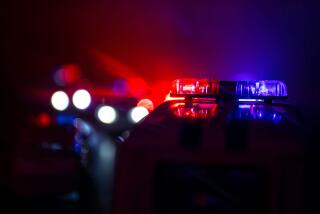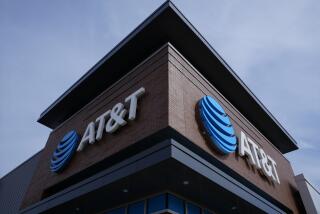911 Just a Number in Some Areas
- Share via
WASHINGTON — If you’re visiting Montezuma, Ga., and need help, don’t bother calling 911. It doesn’t work there and it won’t work in dozens of other places throughout the country, either.
“Many people think 911 is everywhere,” said Woody Glover, executive director of the 911 network for East Texas. “But there are a lot of pockets of the country that aren’t covered.”
By one estimate, about 700 mostly small and rural counties have no form of the service. By another estimate, 9% of the U.S. population lacks it.
The major reasons: The about $1 million to $4 million in start-up costs--primarily communications and computer equipment--and the cost to run the system, including pay for round-the-clock dispatchers. These costs are paid by the people who live in communities with 911, and voters usually decide whether their state or county should get the service.
Longtime residents of communities without 911 service generally know the number to call in an emergency.
“The problem arises when people move into a community or visit it,” said John Ellison, executive director of 911 service for Shelby County, Ala. In those cases, precious time can be lost, jeopardizing lives, public safety officials say.
When people call 911 and it’s not available, they typically get a fast busy signal or a message that the service is not available. To get emergency help, they must call the local, seven-digit number for fire, police or rescue, probably requiring a separate call to find out the phone number.
About 260,000 calls a day are made to 911.
Of the two forms of 911 service in the United States, “enhanced” service is the most common as well as the most helpful to emergency personnel: A dispatcher automatically gets the caller’s telephone number and address, crucial information that speeds up emergency response time.
The only exception is when people use cellular phones. But federal regulators are requiring cellular companies to install new technology by 2001 that will give 911 dispatchers location information.
The other form of 911 service is called “basic,” providing callers with an easy-to-remember number for emergencies but not giving dispatchers any information about the caller.
About 85% to 90% of the population has some type of 911 service, covering 65% to 70% of the country geographically, said Bill Stanton, executive director of the National Emergency Number Assn., one of the few groups that tracks systems.
The association estimates that 700 counties lack 911 service, but won’t provide a list of them.
Jim Beutelspacher, who oversees Minnesota’s 911 systems and compiles nationwide population statistics on 911 availability, estimates that 9% of the U.S. population lacks 911 service.
Lake County, Tenn., population 9,000, is one place without 911.
“We’re such a small county we feel like it would be quite a bit of an added expense to have 911,” said county executive Macie Roberson. “So it was something we could not afford.”
Residents haven’t pushed for it and know the numbers to call in emergencies, Roberson said. Not having 911 “has never been a problem--never a problem.”
Montezuma, Ga., with 7,000 residents, also doesn’t have 911 service but is considering an enhanced 911 system.
“People seem fairly satisfied with the system now, even though they have to dial seven digits rather than just three,” said Police Chief Lewis Cazenave.
The 911 service, following a model developed in Europe after World War II, came to America after a U.S. presidential commission recommended in 1967 that a single number be created for reporting emergencies. One year later, AT&T; announced that it would set aside 911 for this purpose. The first systems began in February 1968 in Haleyville, Ala., and Nome, Alaska.
More to Read
Sign up for Essential California
The most important California stories and recommendations in your inbox every morning.
You may occasionally receive promotional content from the Los Angeles Times.













